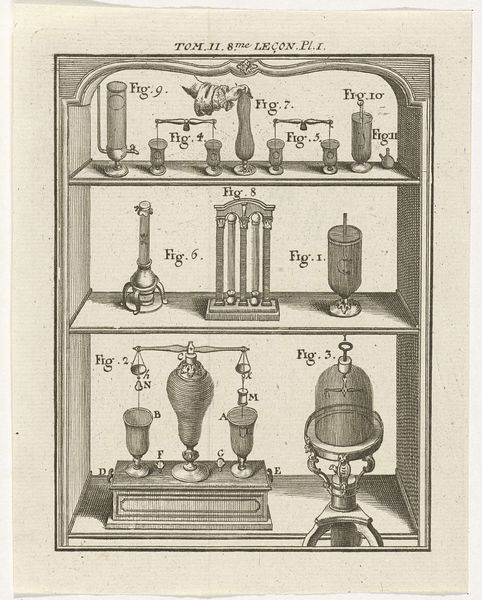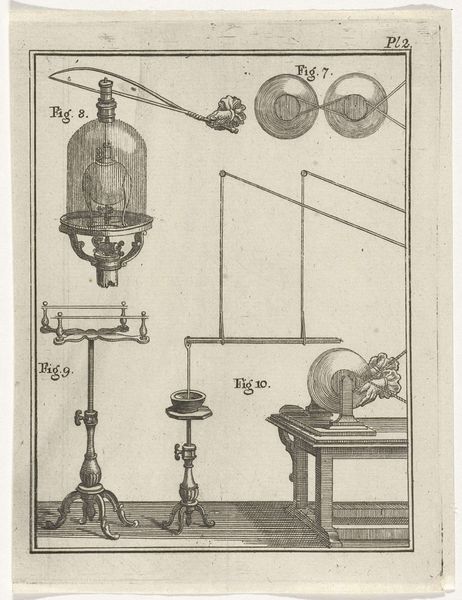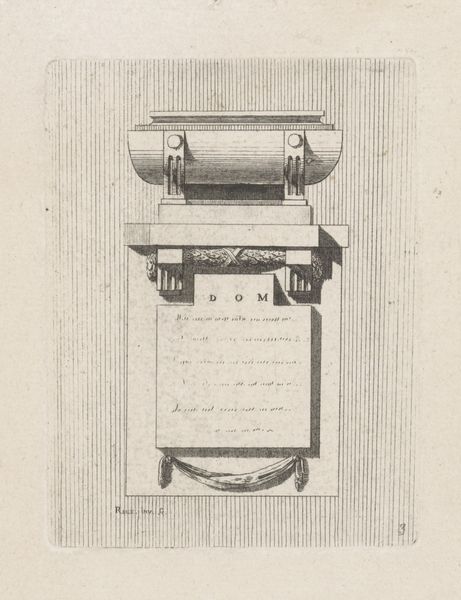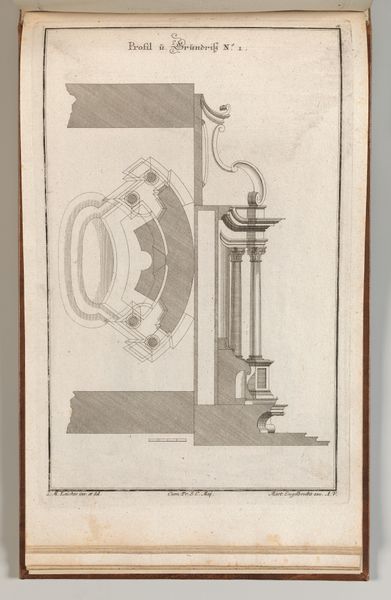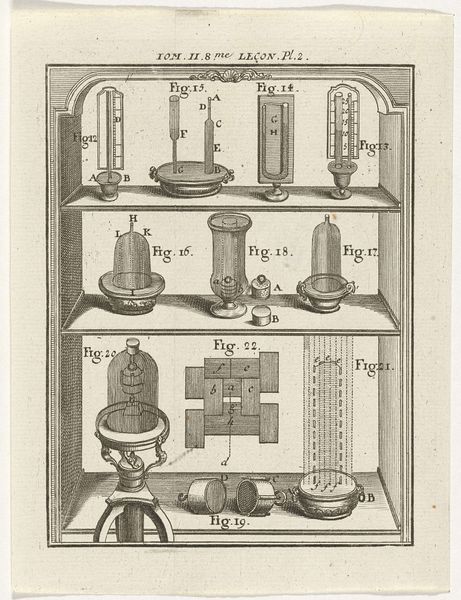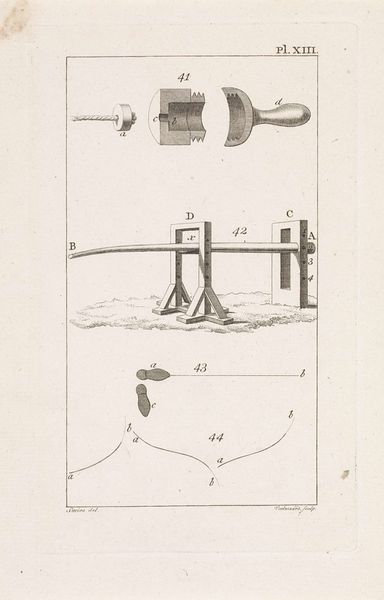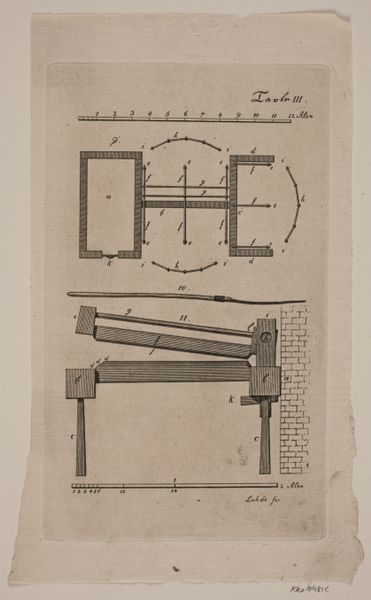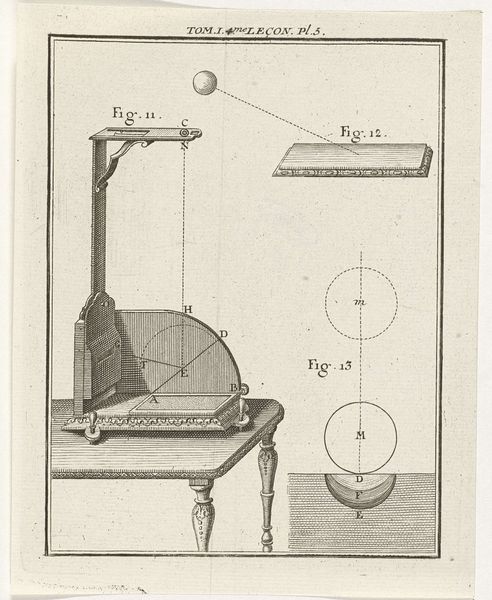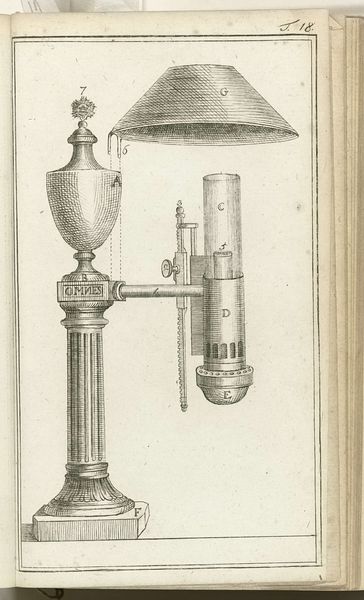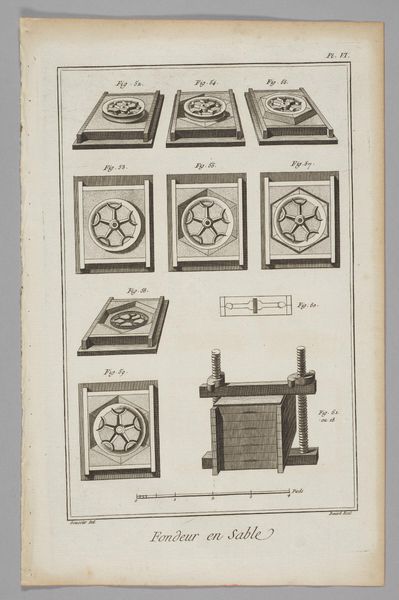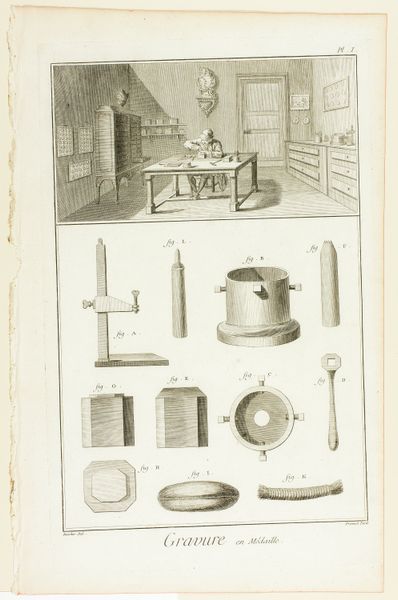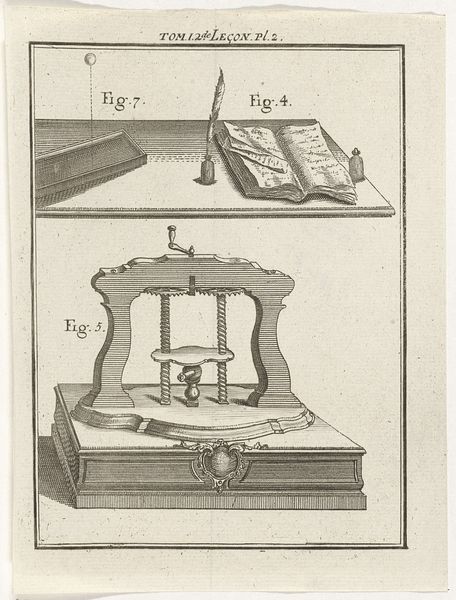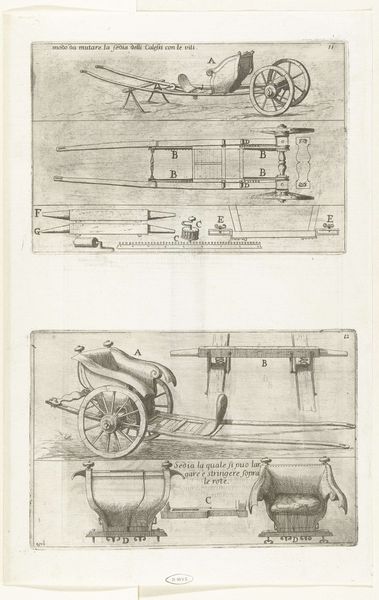
print, engraving
#
baroque
# print
#
old engraving style
#
geometric
#
history-painting
#
academic-art
#
engraving
Dimensions: height 164 mm, width 126 mm
Copyright: Rijks Museum: Open Domain
Curator: Welcome to the Rijksmuseum. We’re looking at a print called "Natuurkundige instrumenten" by Nicolaas van Frankendaal, created in 1759. It's an engraving illustrating various scientific instruments. Editor: Immediately, it strikes me as a testament to the burgeoning scientific curiosity of the Enlightenment era. The detailed linework gives the instruments an almost reverential quality. There’s a formality to it, wouldn't you say? Curator: Absolutely. Prints like this served a crucial purpose in disseminating knowledge. The engraver, Frankendaal, was tasked with making these complex inventions accessible to a wider audience through visual representation. Consider the role of visual literacy here. How would someone who lacked firsthand experience interpret this imagery, particularly given the burgeoning popular fascination with scientific discoveries? Editor: That's an excellent point. It makes me wonder about the accessibility of science in the 18th century, and for whom were these images created? Were they predominantly intended for the consumption of elite scholars, reinforcing existing power structures built on knowledge and class? The image reads now as strangely compelling. I am drawn into the intricacy, a world away from digital renders. Curator: Yes, but they also functioned within a network of intellectual exchange. Academic art in this context was serving the institutions that benefited from scientific advancement. I see this not merely as an innocent documentation of tools, but part of a larger discourse where art and science collaborated to shape public opinion and, implicitly, reinforce social stratification. Editor: That's insightful. Viewing it through that lens highlights the limitations of objectivity, even in scientific illustration. We can't ignore that this print, like any artwork, exists within a specific historical and ideological context. And this work participates in a feedback loop, where class defines access, in a moment where we’re now contending with whether “science” will be something available and unbiased in its application across identity, race, gender... Curator: Precisely. "Natuurkundige instrumenten" represents far more than a mere collection of scientific tools; it reflects the intertwined narratives of knowledge, power, and artistic production. It highlights how scientific pursuit itself was embedded within particular frameworks. Editor: I will keep thinking about who had access and what assumptions were inherent to their interpretations, beyond a surface reading of “scientific progress." Thank you, it gives the term “academic art” a completely different meaning now.
Comments
No comments
Be the first to comment and join the conversation on the ultimate creative platform.

